Query Documents (Elasticsearch) activity
An activity that retrives one or more documents from Elasticsearch.

Configure the Query Documents activity
Examples
- (External) AgilePoint NX Connector For Elasticsearch
- Examples - Step-by-step use case examples, information about what types of examples are provided in the AgilePoint NX Product Documentation, and other resources where you can find more examples.
Prerequisites
- AgilePoint NX OnDemand (public cloud), AgilePoint NX PrivateCloud, or AgilePoint NX OnPremises v9.0 or higher.
Good to Know
- To send an email notification, click
Advanced
 >
Email Notifications
>
Email Notifications  .
. For more information, refer to Email Notifications screen (Process Activities).
- In most text fields, you can use process data variables as an alternative to literal data values.
- You can configure whether this activity waits for other activities before it runs.
For more information, refer to How Do I Configure an Activity to Wait for Other Incoming Activities?
- This section shows the configuration settings on the configuration screens for this activity. Other configuration settings apply to system activities. For more information, refer to:
How to Start
- Open Process Builder.
For information about how to open this screen, refer to Process Builder.
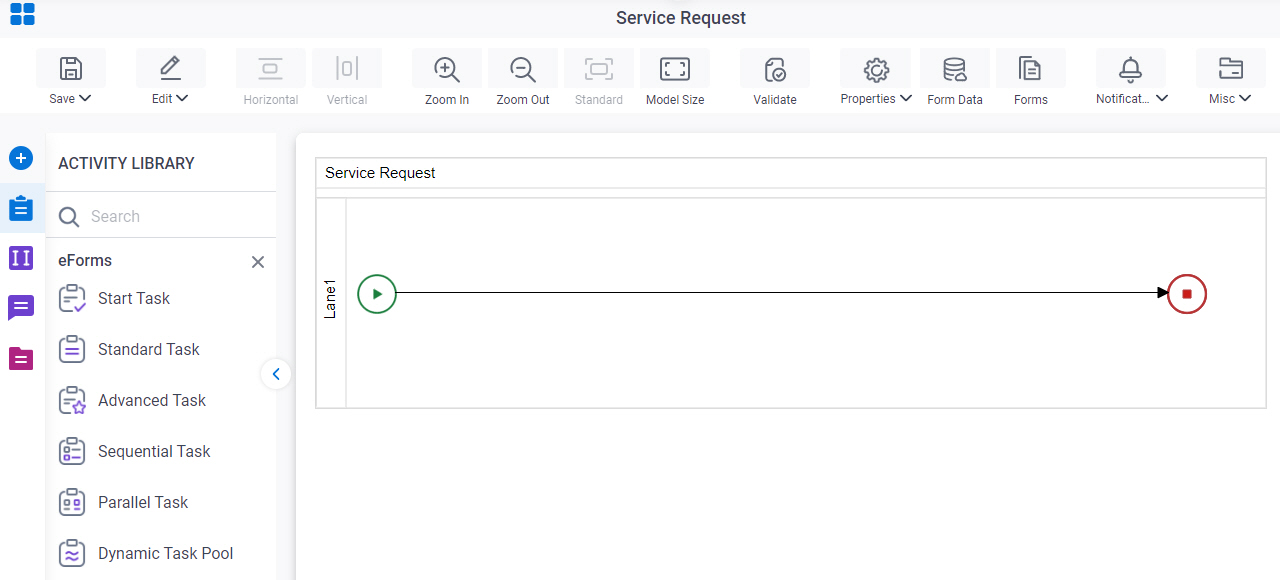
- In Process Builder, in the Activity Library,
open the Elasticsearch tab.
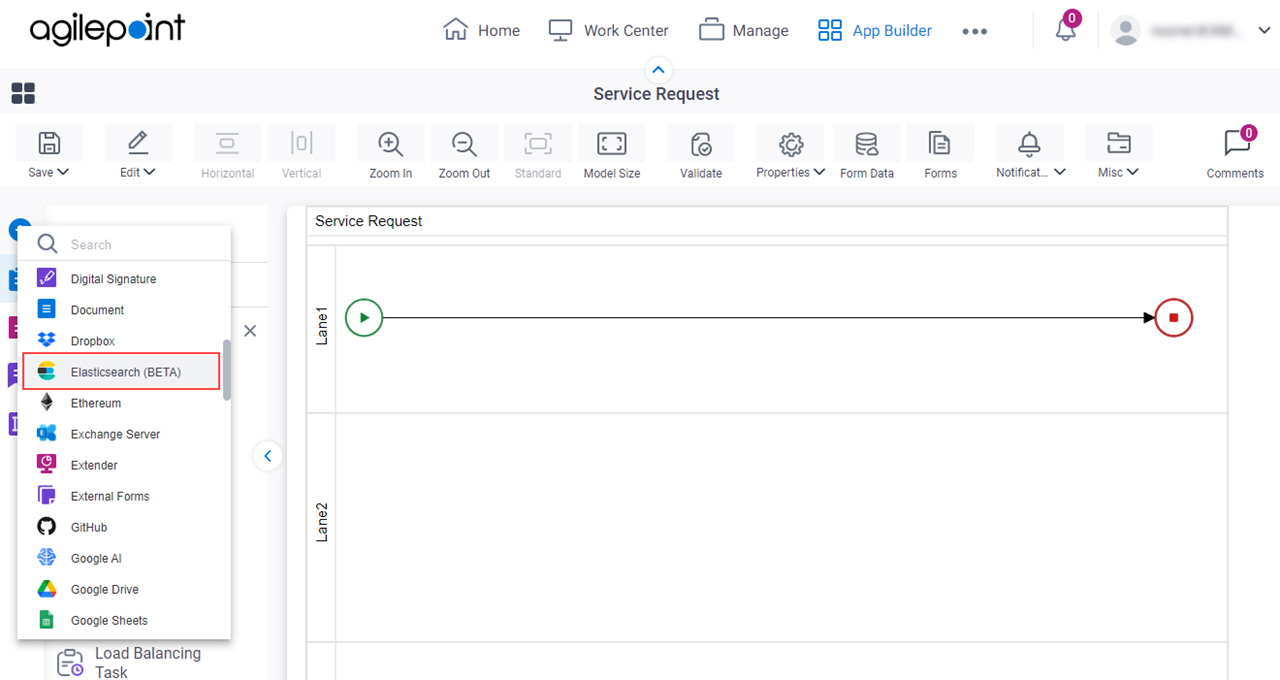
- On the Elasticsearch tab,
drag the Query Documents
activity onto your process.
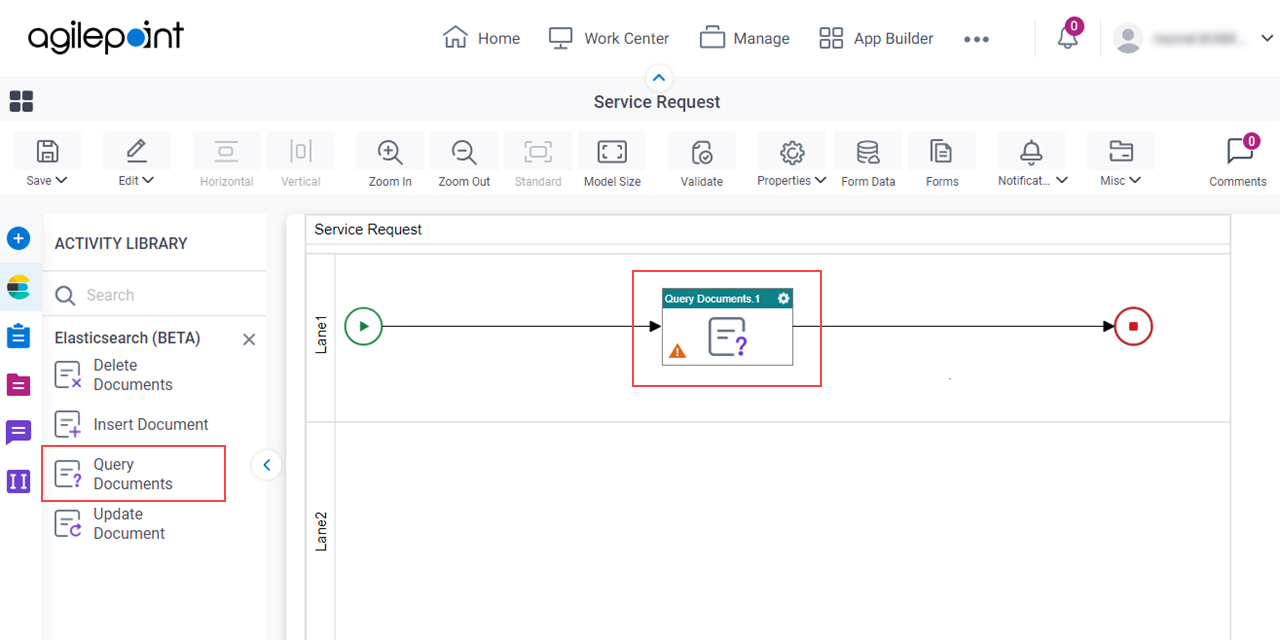
General Configuration
Specifies the basic settings for the Query Documents activity.
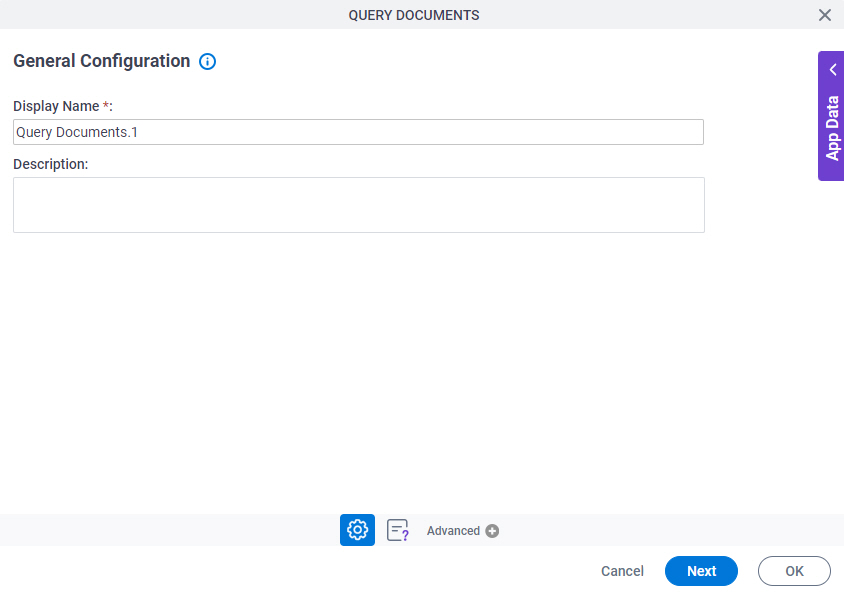
Good to Know
- Documentation for this screen is provided for completeness. The fields are mostly self-explanatory.
Fields
| Field Name | Definition |
|---|---|
|
Display Name |
|
|
Description |
|
Query Documents Configuration > Where tab
Specifies the information about the documents to retrieve from Elasticsearch.
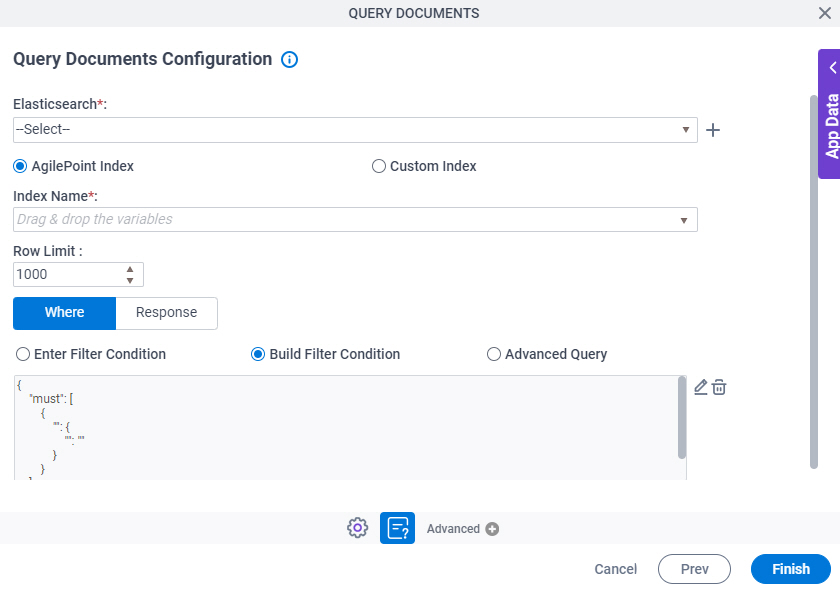
Fields
| Field Name | Definition |
|---|---|
|
Elasticsearch |
|
|
Create |
|
|
AgilePoint Index / Custom Index |
|
|
Index Name |
|
|
Row Limit |
|
|
Enter Filter Condition / Build Filter Condition / Advanced Query |
|
|
Create |
|
|
Delete |
|
|
Edit |
|
Query Documents Configuration > Where tab > Create Conditions
Configures the condition to use in your query to filter documents.
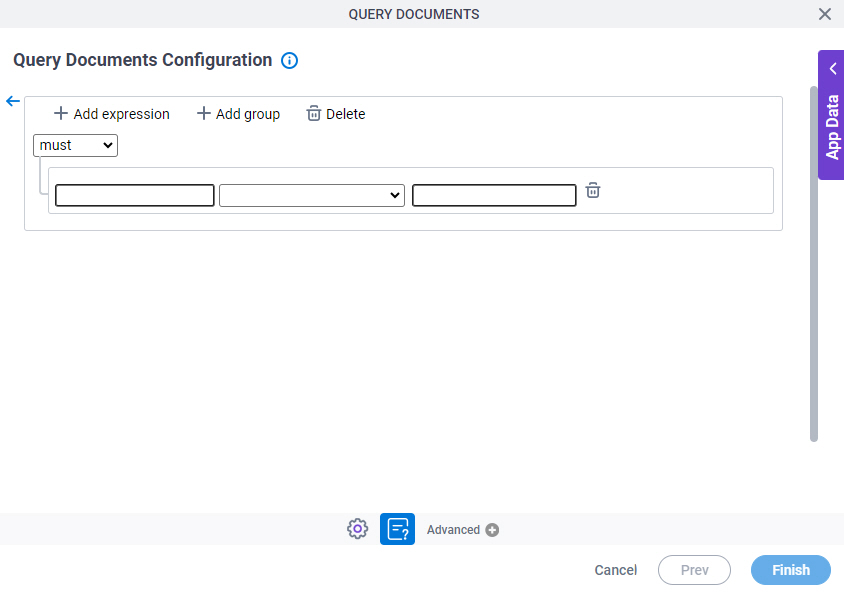
Fields
| Field Name | Definition |
|---|---|
|
Add expression |
|
|
Add group |
|
|
Delete |
|
Select Nest Type |
|
Column Name |
|
|
Comparer |
|
|
Value |
|
|
Back |
|
Query Documents Configuration > Response tab
Specifies where to store the response from Elasticsearch.
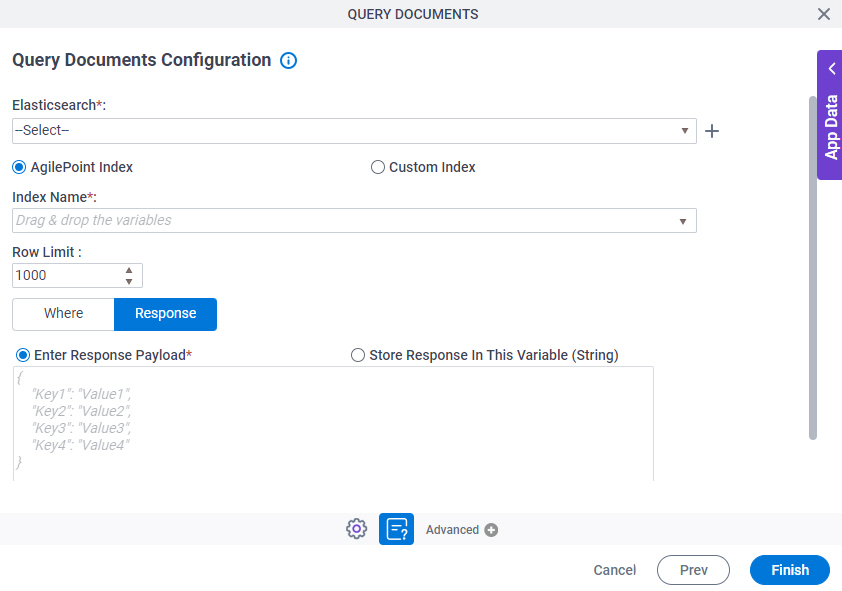
Fields
| Field Name | Definition |
|---|---|
|
Elasticsearch |
|
|
Create |
|
|
AgilePoint Index / Custom Index |
|
|
Index Name |
|
|
Row Limit |
|
|
Enter Response Payload / Store Response In This Variable |
|



